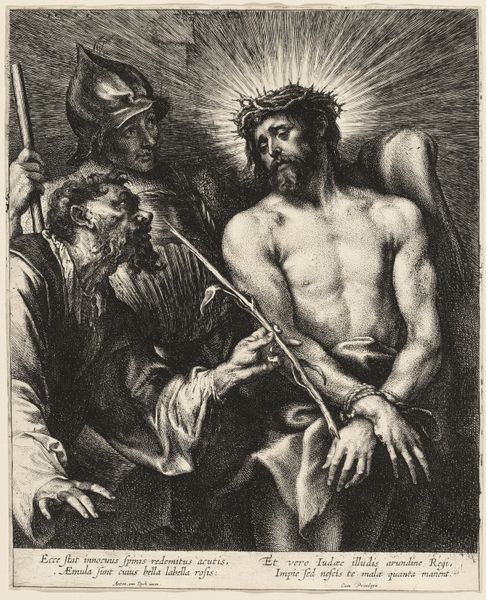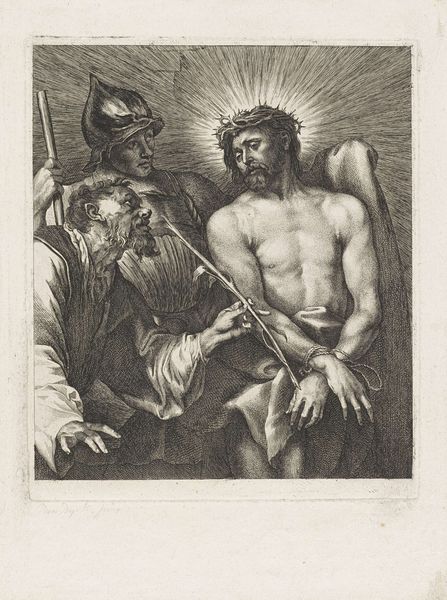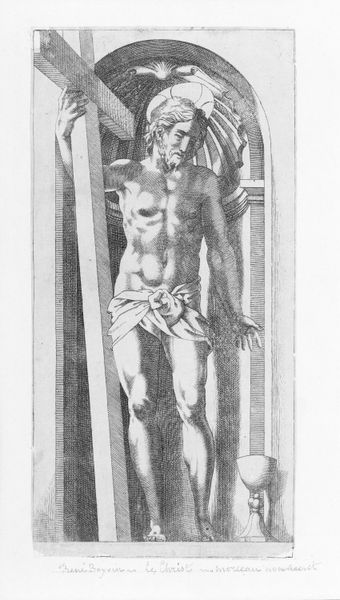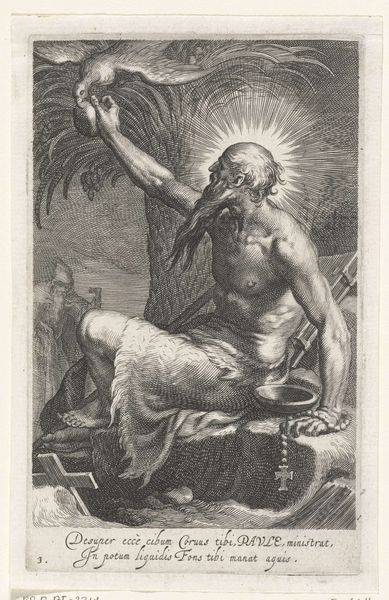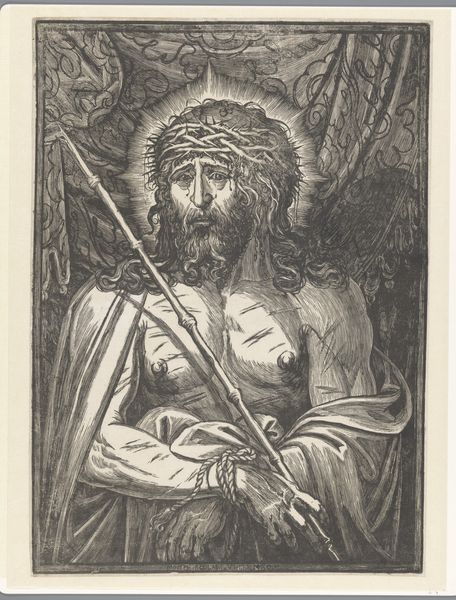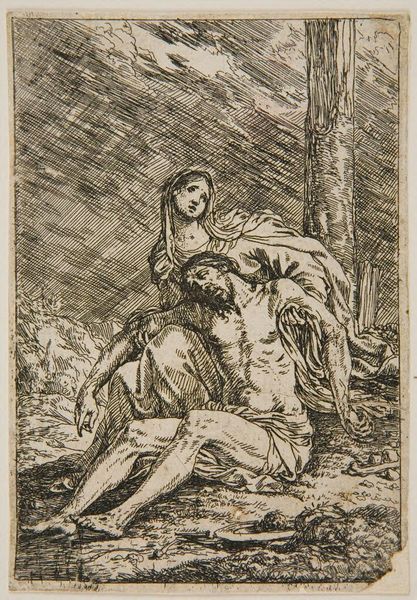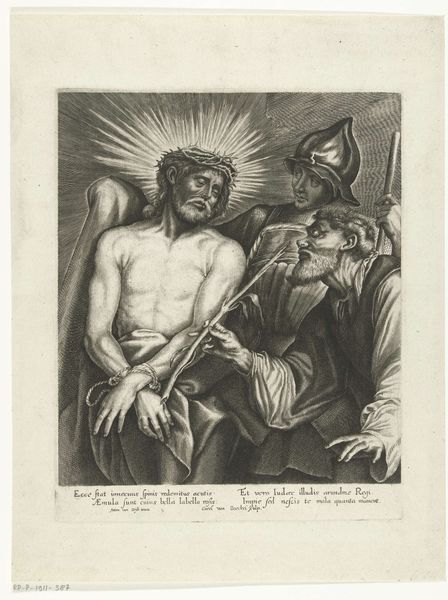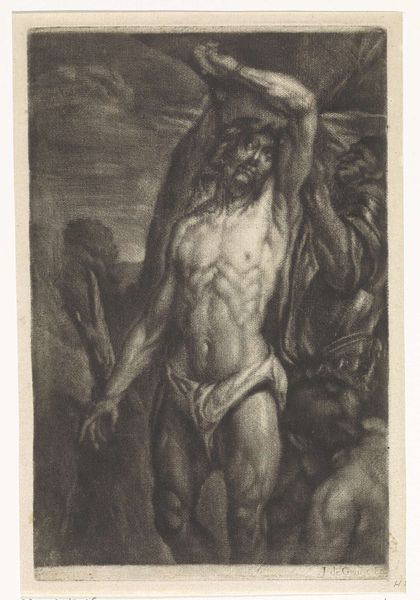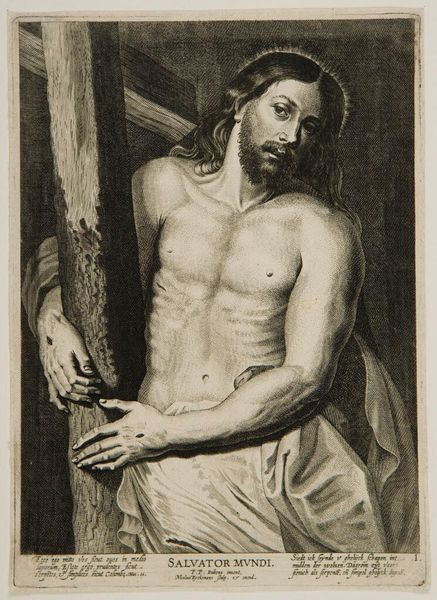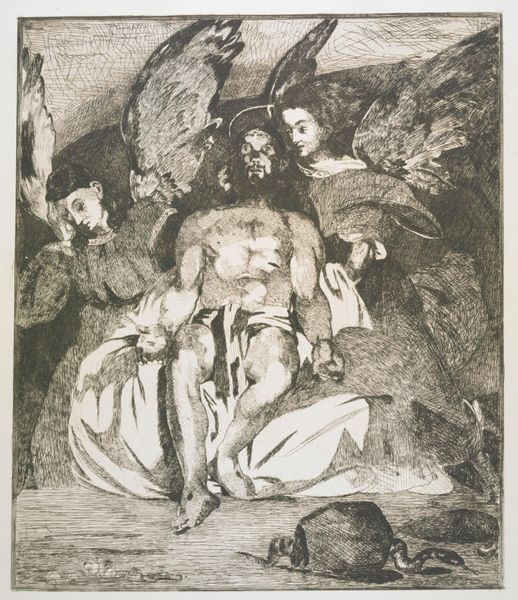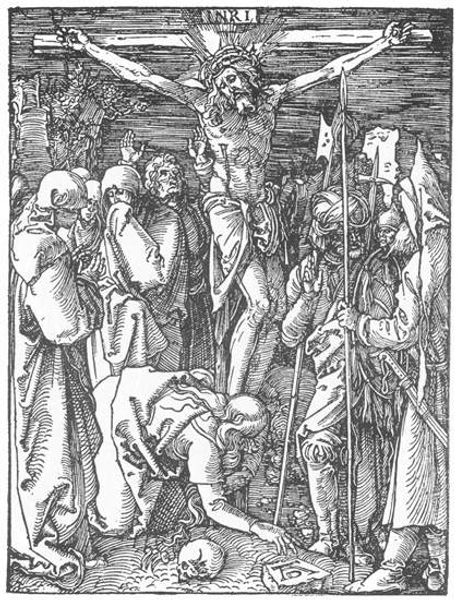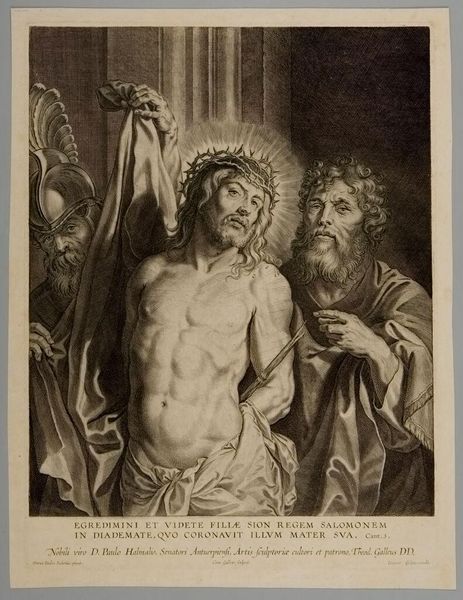
drawing, print, engraving
portrait
drawing
baroque
figuration
history-painting
engraving
christ
Dimensions: Sheet (clipped impression): 10 in. × 8 1/16 in. (25.4 × 20.5 cm)
Copyright: Public Domain
Curator: We're standing before "Christ Crowned with Thorns," an engraving made in 1671, a copy by H. Johnston. The original artwork portrays a biblical scene with great intensity. What strikes you first about this piece? Editor: The immediate thing I notice is the suffering etched into Christ's face, rendered in stark black and white. The contrast makes the scene even more unsettling. His downcast gaze is really compelling and sad. It is framed with some aggressive characters at his sides. Curator: Yes, the piece vividly captures a moment of religious significance and of suffering, particularly prevalent themes during the Baroque period. Prints like these, widely disseminated, played a significant role in shaping public perceptions and religious devotion at the time. What do you make of that contextual function? Editor: Absolutely. These depictions weren't just artistic expressions; they were tools of communication and social control. Who was seeing them, and how would images like these work to enforce faith, loyalty and piety at a crucial political juncture? Consider that, and the brutal visual language used to glorify sacrifice. It creates a feeling of deep unease. Curator: That's a fascinating point about the brutal visual language. The technique is also remarkable: consider the level of detail Johnston achieves through engraving. The use of light and shadow is striking for a monochrome piece and dramatically highlights Christ's torment while placing him in the context of powerful drama. It feels calculated. Editor: It is, indeed. And consider the original artist's choice to showcase violence while also framing it with this sense of spiritual solemnity. We, today, need to keep examining how art like this continues to perpetuate narratives of suffering and redemption and the dangerous glorification of sacrifice in a way that might continue to normalise oppression. Curator: Your perspective provides vital insights. This work provides an aesthetic glimpse into a singular moment, but also represents a chapter in the broader visual history of suffering and faith, how we represent, and potentially exploit, images. Editor: Exactly. The historical context of power relations coupled with contemporary analysis helps reveal these older works and continue crucial conversations.
Comments
No comments
Be the first to comment and join the conversation on the ultimate creative platform.
